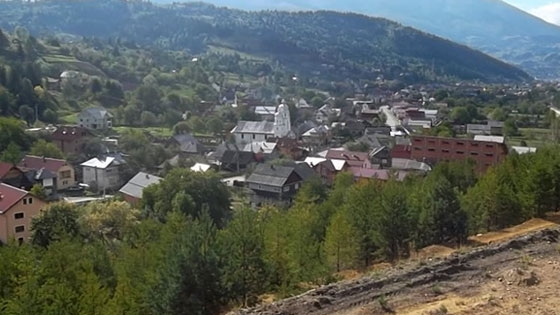First, there was a hill. Then a coal mine, and now there is a valley with a lake. This is Bodos in 2013, a remote village in the mountains of Transylvania. For years, the only source of income in Bodos was lignite coal mining. That was a blessing and a curse; the mining governed the lives of the locals, and at the same time it shaped the contour of their landscape.
The Bodos mine was one of many. During the communist era in Romania, mines dotted the landscape. In 1989, there were almost 300 mines in operation. By late 1990s, coal mines were draining resources, and Romania's mining operations needed huge subsidies from the government to continue operating. But officials worried that shutting the mines down would throw people out of work and push families into poverty.



